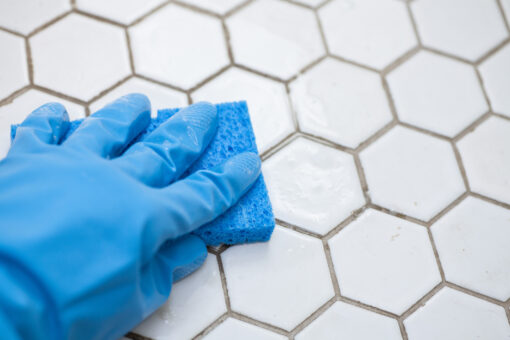Which of These Five Grout Facts Surprised You? Learn About Grout and More
 Do you want to start tiling? While learning about the factors to consider when choosing wall or floor tile is important, don’t forget to study about grout. To get you started, here are five facts. Remember that you can reach out to Mission Tile West for all your tile needs. Call us at 626-799-4595 or stop by to learn more.
Do you want to start tiling? While learning about the factors to consider when choosing wall or floor tile is important, don’t forget to study about grout. To get you started, here are five facts. Remember that you can reach out to Mission Tile West for all your tile needs. Call us at 626-799-4595 or stop by to learn more.
Grout can be a key design component
All too often, individuals invest a lot of time and effort in locating the ideal tile and then forget about the grout. However, the grout you use might have a significant impact on your design. For example, you could use contrasting grout to help draw attention to an odd tile layout pattern. In other cases, you may wish to use a grout that matches the tile to assist conceal the grout lines.
Grout colors can be customized
There are a lot more options for grout color than just white, beige, and other neutrals. Some manufacturers have over 30 basic colors in their catalogs, and you can even alter the color by mixing a color additive into pre-colored grout. If you go this way, make sure you measure out how much additive you’re using so you can get the color right the first time.
You can change the grout color without having to re-lay the tiles
You may change the color of your grout without tearing out the tile or attempting the messy procedure of installing new grout over the current grout if you don’t like it or if it has become soiled or dirty. Simply purchase grout colorant, which is a waterborne epoxy that you can apply cleanly and simply to your grout lines with a little brush. Brushes of various sizes are available to accommodate various tile seam sizes. The greatest effects are usually achieved by using a colorant that is a darker color than the original grout.
The choice of grout can make or break the vintage look
We have a range of historical tile lines at Mission Tile West that are great for replicating an authentic look in historic houses dating back to the 1920s. It’s crucial to remember, though, that old tile won’t appear quite right unless you also use vintage grout. In the 1920s and 1930s, for example, incredibly tight “string grout” less than 1/8 inch wide was standard. Using a larger grout line for a vintage tile pattern may negate the point of choosing a vintage tile since you will not achieve the realistic look you desire.
Some grout may cause damage to your tiles
Grout comes in two types: sanded and un-sanded. The most common type of grout used in tile projects is sanded grout. Sand provides the strength and bulk required to fill grout lines bigger than 1/8 inch wide. It also reduces the amount of polymer in the product, making it less expensive than non-sanded grout. Unfortunately, sanded grout will not compress effectively for grout lines smaller than 1/8 of an inch wide, necessitating the use of more expensive non-sanded grout.
If you’re working with a delicate tile that’s prone to abrasion, use sanded grout with caution, since the gritty sand in the grout could scratch your tile.
